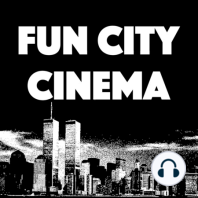5 min listen
Lost in New York
FromFun City Cinema
ratings:
Length:
54 minutes
Released:
Dec 11, 2020
Format:
Podcast episode
Description
We thought it would be fun to do a nice, light Christmas episode, focusing on one of the many beloved Gotham holiday movies. Just take it easy for an episode, right? Kinda phone it in?
So we settled on Chris Columbus and John Hughes’ 1992 smash "Home Alone 2: Lost in New York" – and ended up talking about Rudy Giuliani, Donald Trump, “Broken Windows,” the Central Park Five, and 9/11, along with the film’s total geographical inconsistency and the spectacular tonal failure of its violence.
Our guests are “Close-Ups: New York Movies” author Mark Asch, Pitchfork senior editor Jillian Mapes, “You’re Wrong About” co-host Sarah Marshall, and freelance film writer Anya Stanley. Happy holidays!
So we settled on Chris Columbus and John Hughes’ 1992 smash "Home Alone 2: Lost in New York" – and ended up talking about Rudy Giuliani, Donald Trump, “Broken Windows,” the Central Park Five, and 9/11, along with the film’s total geographical inconsistency and the spectacular tonal failure of its violence.
Our guests are “Close-Ups: New York Movies” author Mark Asch, Pitchfork senior editor Jillian Mapes, “You’re Wrong About” co-host Sarah Marshall, and freelance film writer Anya Stanley. Happy holidays!
Released:
Dec 11, 2020
Format:
Podcast episode
Titles in the series (17)
Introducing Fun City Cinema by Fun City Cinema
